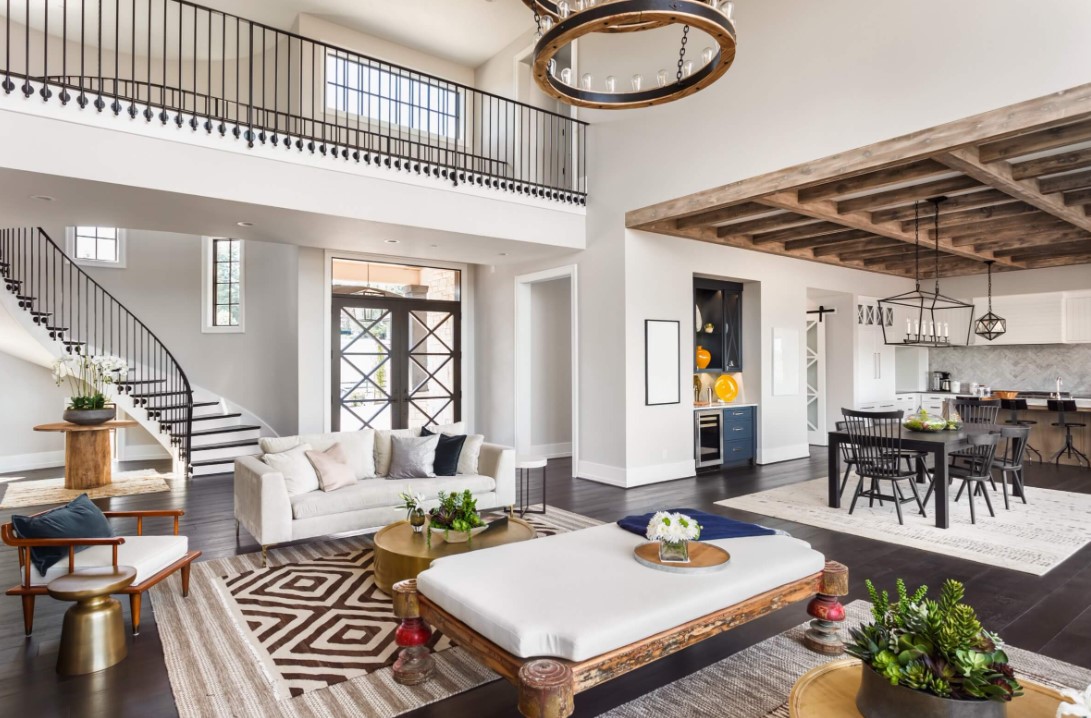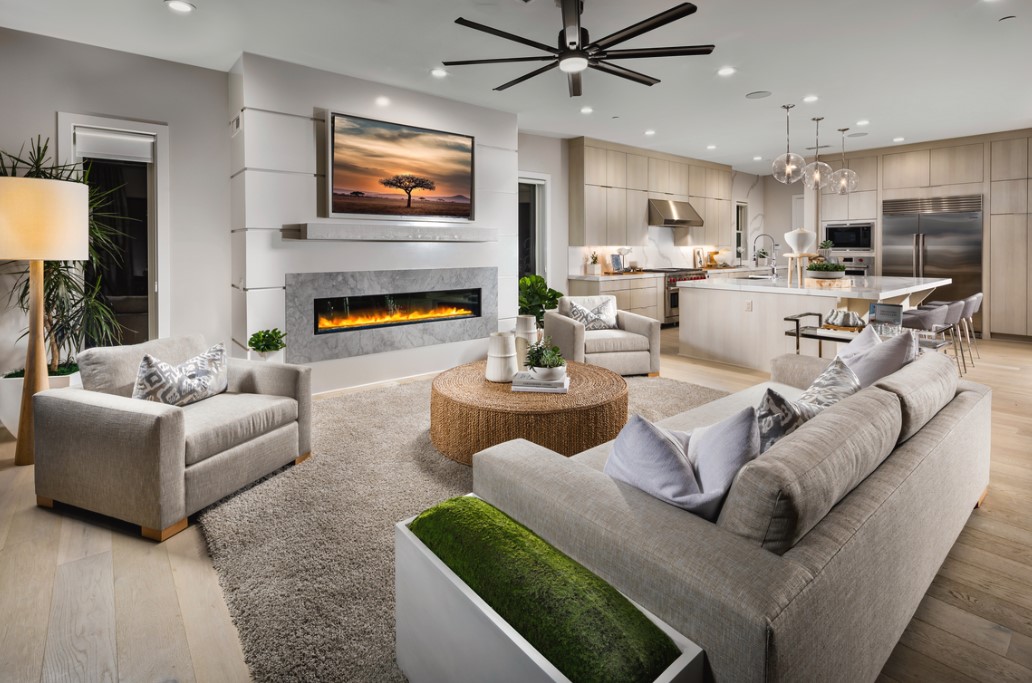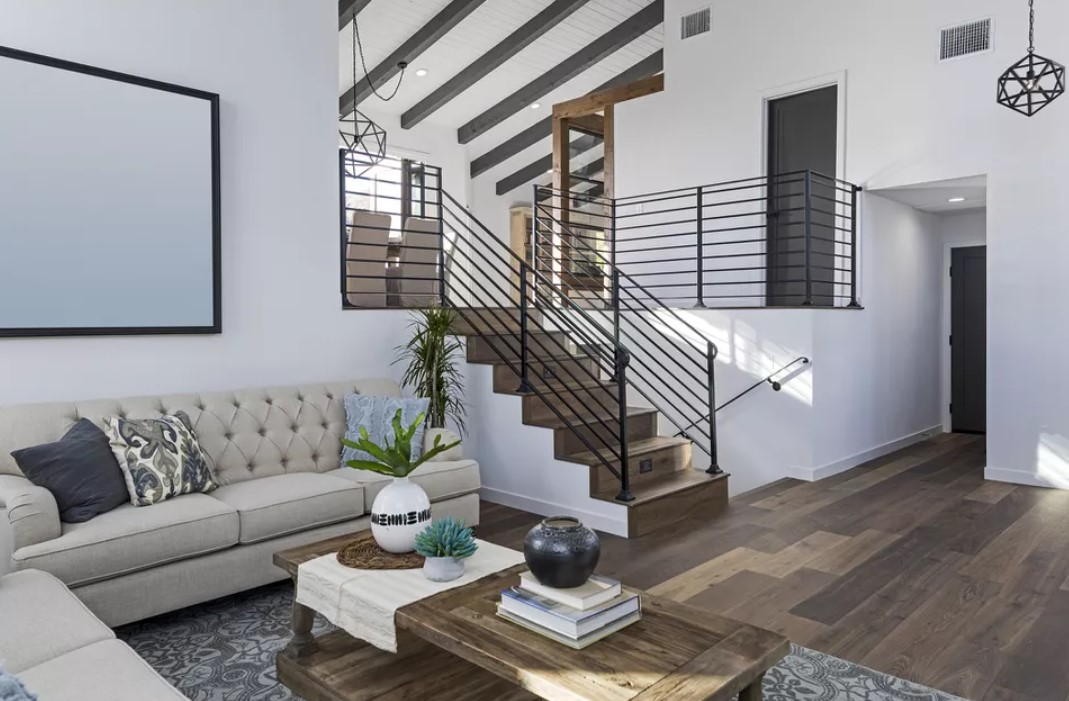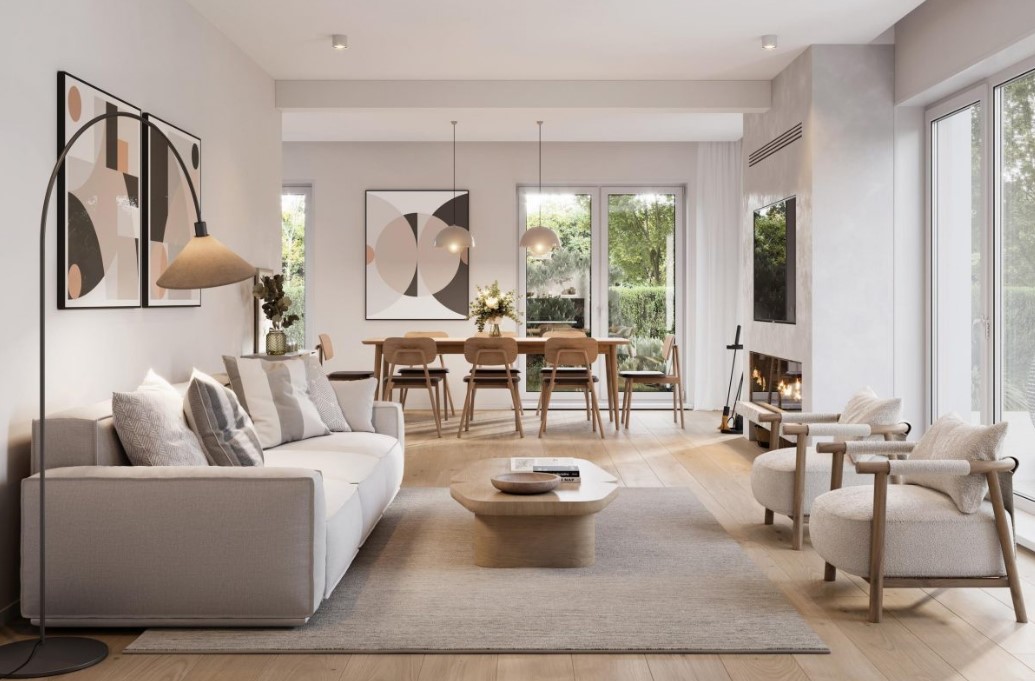Interior design is a blend of art and science that enhances the interior of a space to achieve a more aesthetically pleasing and functional environment. Various design styles cater to different tastes and preferences, allowing individuals to express their personality and lifestyle through their living spaces. This guide explores a range of popular interior design styles, providing insights into their key characteristics and how to incorporate them into your home.
Introduction to Interior Design Styles

Interior design styles encompass a spectrum of aesthetics and approaches that define how spaces are organized and adorned. Each style reflects a distinct philosophy, history, and cultural influence, offering unique atmospheres and visual narratives within a space. From timeless classics to contemporary innovations, understanding these styles allows individuals to express their personalities and create environments that resonate with their preferences and lifestyles.
Whether drawn to the elegance of traditional motifs, the sleek lines of modern minimalism, or the eclectic charm of bohemian chic, exploring interior design styles opens doors to endless possibilities for crafting spaces that are both functional and visually compelling.
Why Interior Design Styles Matter

Understanding why interior design styles matter is crucial for creating spaces that not only look good but also function effectively and reflect personal taste. Here’s why interior design styles are important:
- Express Individuality: Interior design styles allow individuals to showcase their personality and preferences through their living or working environments. Whether it’s a preference for clean lines and simplicity or a love for bold colors and patterns, the chosen style communicates who you are to anyone who enters the space.
- Create Atmosphere: Different styles evoke different moods and atmospheres. For example, a Scandinavian design with its emphasis on light, natural materials, and minimalism creates a sense of calm and serenity, while an industrial style with its raw, unfinished look may evoke a sense of edginess and creativity. Choosing the right style can influence how comfortable and inspired you feel in your surroundings.
- Enhance Functionality: Interior design styles aren’t just about aesthetics; they also contribute to the functionality of a space. For instance, a contemporary open-plan layout can promote collaboration and interaction in a workplace, whereas a cozy, rustic style may encourage relaxation and intimacy in a home setting. Understanding how different styles affect usability helps in designing spaces that cater to specific needs.
- Tell a Story: Each interior design style has its own history, cultural influences, and design elements. By selecting a particular style, you are also telling a story about your interests, values, and inspirations. Whether it’s a narrative of simplicity and sustainability or a celebration of opulence and grandeur, the chosen style contributes to the overall narrative of the space.
- Increase Property Value: Well-executed interior design can significantly enhance the value of a property. Homes or offices that are tastefully decorated and aligned with current design trends tend to attract more interest from potential buyers or renters. A cohesive and appealing interior design style can make a property stand out in a competitive market.
In conclusion, interior design styles matter because they go beyond mere decoration; they shape our experiences, reflect our identities, and contribute to the functionality and value of our living and working spaces. Choosing the right style involves considering personal preferences, practical needs, and the desired atmosphere, resulting in spaces that are both aesthetically pleasing and purposeful.
10 Popular Interior Design Styles

Interior design styles are diverse and cater to various tastes and preferences, ranging from timeless classics to contemporary trends. Understanding these styles can help you create a cohesive and visually appealing living space that reflects your personality. Here are 10 popular interior design styles to consider:
1. Scandinavian
Scandinavian design is renowned for its simplicity, functionality, and connection to nature. Key features include:
- Light Colors: White walls and light-toned wood floors create a bright, airy atmosphere.
- Minimalism: Clean lines, clutter-free spaces, and a focus on minimalistic decor.
- Natural Elements: Use of natural materials like wood and leather for warmth.
- Hygge: Emphasis on coziness with soft textiles, warm lighting, and comfortable furniture.
Scandinavian style is ideal for those who prefer a clean, modern aesthetic with a touch of warmth and comfort.
2. Modern
Modern interior design is characterized by sleek lines, minimalism, and a focus on functionality. Features include:
- Neutral Palette: Neutral colors like white, black, and gray dominate the color scheme.
- Open Spaces: Emphasis on open floor plans and natural light to create a spacious feel.
- Minimalist Furniture: Simple yet stylish furniture with clean lines and geometric shapes.
- Industrial Touches: Use of metal, glass, and concrete for a contemporary look.
Modern style appeals to those who appreciate simplicity, sophistication, and a clutter-free environment.
3. Industrial
Industrial design draws inspiration from old factories and industrial spaces, combining raw materials with exposed finishes. Characteristics include:
- Raw Materials: Exposed brick walls, concrete floors, and metal accents.
- Neutral Colors: Shades of gray, brown, and black create an understated color palette.
- Vintage Furniture: Repurposed industrial furniture and accessories add character.
- Open Floor Plans: Emphasis on spaciousness and a utilitarian aesthetic.
Industrial style is perfect for urban dwellers who appreciate a rugged, raw aesthetic with a nod to history and functionality.
4. Mid-Century Modern
Mid-century modern design emerged in the mid-20th century and remains popular for its timeless appeal and retro charm. Features include:
- Iconic Furniture: Designs from the 1950s and 1960s, characterized by clean lines and organic forms.
- Natural Materials: Use of wood, leather, and natural fibers for furniture and decor.
- Bold Colors: Vibrant hues like mustard yellow, orange, and teal add a playful touch.
- Minimalist Approach: Focus on functionality, simplicity, and open spaces.
Mid-century modern style appeals to those who appreciate vintage aesthetics with a contemporary twist.
5. Bohemian
Bohemian, or boho, design embraces creativity, free-spiritedness, and a laid-back lifestyle. Characteristics include:
- Eclectic Mix: Mix of patterns, textures, and cultural elements from around the world.
- Rich Colors: Bold hues like deep purple, turquoise, and gold create a vibrant atmosphere.
- Natural Materials: Use of wood, rattan, and textiles like sisal and jute for a cozy feel.
- Artistic Flair: Incorporation of artwork, tapestries, and handmade crafts.
Bohemian style is ideal for those who love to travel, collect unique pieces, and express their individuality through decor.
6. Farmhouse
Farmhouse design evokes a sense of warmth, simplicity, and rustic charm inspired by rural farmhouses. Features include:
- Reclaimed Wood: Use of weathered wood accents and furniture for a rustic feel.
- Neutral Palette: Soft colors like whites, creams, and light grays create a serene atmosphere.
- Vintage Elements: Incorporation of antiques, distressed finishes, and handmade items.
- Functional Spaces: Emphasis on practicality with open shelving, farmhouse sinks, and large dining tables.
Farmhouse style appeals to those who appreciate a cozy, nostalgic aesthetic with a focus on comfort and functionality.
7. Coastal
Coastal design captures the relaxed and breezy atmosphere of seaside living. Characteristics include:
- Color Palette: Soft blues, greens, whites, and sandy neutrals reminiscent of the beach.
- Natural Materials: Use of wicker, rattan, and driftwood furniture for a coastal feel.
- Nautical Accents: Incorporation of rope, seashells, and marine-themed decor.
- Light and Airy: Emphasis on large windows, breezy fabrics, and open spaces.
Coastal style is perfect for those who crave a tranquil and soothing environment inspired by the ocean.
8. Traditional
Traditional interior design emphasizes elegance, symmetry, and classic decor elements. Features include:
- Rich Woods: Use of dark woods like mahogany and cherry for furniture and architectural details.
- Antique Furniture: Incorporation of ornate pieces, wingback chairs, and formal dining sets.
- Formal Layout: Symmetrical arrangements, layered textiles, and detailed moldings.
- Warm Colors: Deep reds, greens, and golds create a sense of luxury and sophistication.
Traditional style appeals to those who prefer a timeless, refined aesthetic with a sense of history and grandeur.
9. Rustic
Rustic design celebrates the natural beauty of raw, organic materials and textures. Characteristics include:
- Natural Materials: Use of wood, stone, and exposed beams for a rugged, earthy feel.
- Warm Color Palette: Earth tones like browns, greens, and rusty reds create a cozy atmosphere.
- Vintage Accessories: Incorporation of handmade pottery, woven baskets, and folk art.
- Cozy Ambiance: Emphasis on warmth, comfort, and a connection to nature.
Rustic style is ideal for those who appreciate a warm, inviting atmosphere with a touch of rugged charm.
10. Eclectic
Eclectic design is all about mixing and matching different styles, colors, and textures to create a unique and personalized space. Characteristics include:
- Mix of Styles: Combines elements from various design styles, eras, and cultures.
- Bold Accents: Incorporation of statement pieces, vibrant colors, and unexpected decor.
- Personalized Touch: Reflects the homeowner’s personality, interests, and travels.
- Artistic Expression: Allows for creativity and experimentation with decor and furnishings.
Eclectic style appeals to those who enjoy expressing their individuality and creating a dynamic, visually stimulating environment.
In conclusion, choosing an interior design style involves understanding your personal preferences, lifestyle, and the atmosphere you want to create in your home. Whether you prefer the simplicity of Scandinavian design, the elegance of traditional decor, or the creativity of eclectic style, there’s a design style that can transform your living space into a sanctuary that reflects your unique taste.
Choosing the Right Style for You

Selecting an interior design style for your home involves understanding your preferences, lifestyle, and the atmosphere you wish to create in each space. Each style offers unique characteristics that cater to different tastes and needs, ranging from modern minimalism to cozy rustic charm. Here’s a step-by-step guide to help you find the perfect style for your home:
1. Assess Your Preferences
Begin by reflecting on your personal taste in décor and aesthetics. Consider the colors, textures, and overall ambiance that appeal to you. Do you prefer clean lines and simplicity, or do you lean towards warmth and coziness? Identifying your preferences will narrow down the choices and guide your decision-making process.
2. Consider Your Lifestyle
Think about how you use each room in your home and how the design can support your lifestyle. For instance, if you entertain frequently, you may prioritize an open layout with ample seating. If you work from home, a functional and organized workspace might be essential. Tailoring the design to fit your daily routines ensures practicality alongside aesthetics.
3. Evaluate the Space
Assess the architectural features and layout of your home. Consider factors such as natural light, room size, and existing fixtures. Some styles, like Scandinavian design, thrive in bright, airy spaces with minimal clutter, while others, like industrial design, embrace raw, exposed elements that complement spacious interiors.
4. Explore Different Styles
Research various interior design styles to see which resonates most with your vision. Browse magazines, websites, and social media platforms for inspiration. Take note of elements such as furniture choices, color palettes, and decorative accents that define each style. Visual references can help you visualize how each style would translate into your own space.
5. Balance Practicality and Aesthetics
While aesthetics are important, ensure that your chosen style aligns with practical considerations. Consider maintenance requirements, durability of materials, and budget constraints. Opt for designs that enhance functionality without compromising on the overall look and feel of your home.
6. Create a Cohesive Look
Once you’ve chosen a style, aim for a cohesive design throughout your home. Maintain consistency in colors, patterns, and textures across different rooms to create a unified aesthetic. Introduce variations in scale and proportion to add visual interest while maintaining harmony.
7. Personalize with Details
Make your space uniquely yours by incorporating personal touches and meaningful décor items. Whether it’s artwork, family heirlooms, or travel souvenirs, these elements add character and tell your story within the framework of your chosen design style.
Choosing the right interior design style is a creative and personal process that involves understanding your preferences, lifestyle needs, and the unique characteristics of each style. By taking the time to assess these factors and exploring different options, you can create a home that not only reflects your personality but also enhances your quality of life. Hopefully by looking at some of the interior design styles in this article, you can get a design that suits your wishes.
